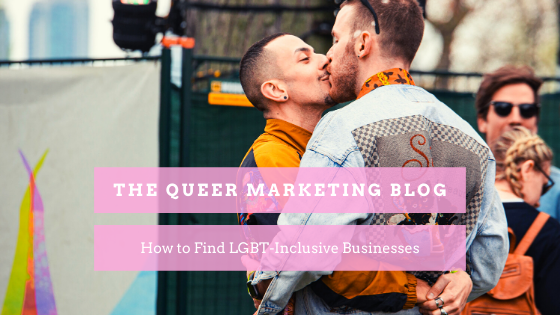When you make a large investment, say more than $ 1,000, what do you look for in a corporation? Maybe you want them to be environmentally friendly (or at least conscious), maybe you want them to pay equal wages to all genders, maybe you just want them to not be evil. When I make a large purchase decision, I look at all these things, but I also want to know what their stance on LGBT-rights is. After all, I don’t want my money to support causes that harm my community. I try to spend my money as consciously as possible, to avoid supporting reclusive causes. For me, the same goes for how I choose my workplace. I want to be recognized for the work I do and I want my companies to extend the same benefits and opportunities to everyone, no matter their gender, sexual identity, or religion. Finding out whether a company is environmentally friendly is fairly easy – there are thousands of articles about it one click away on google. Gay-friendliness is a bit harder to track.
The HRC Corporate Equality Index
With the vision of providing a tool enabling people to spot corporate gay-friendliness, the Human Rights Campaign, the largest American LGBT and queer civil rights organization fighting for equal rights at home, at work, and in the community, has been publishing an annual Corporate Equality Index report since 2002. The report measures American businesses on their treatment of LGBT employees, consumers, and investors. They collect their data for the report through surveys mostly, but their researchers also cross-check business policies and their implications for LGBT workers through public records independently. In the first year, the index awarded the best 100 percent rating to 13 corporations. That number increased every year, with 686 companies receiving a 100 percent rating in the 2020 report. The criteria have evolved over time, to better include transgender rights issues as well.
As with everything, opinions towards the Corporate Equality Index vary. Some view the report as an opportunity for highly rated companies, others think they will lose popularity among conservative customers. However, an American study found such concerns don’t hold up in practice: a good rating in the CEI does not harm a company’s stocks (Johnston & Malina, 2008). The HRC’s goal is to change corporate policies regarding LGBT employees, and in many cases, the report helps them accomplish this mission. From 2004 to 2005, 92 percent of companies listed in the index started including discrimination protections for transgender employees, where they previously had not (Hornsby, 2006). Additionally, poor scores on the index have lead to bad press for corporations, which has forced many of them to change their policies under pressure to improve their score (Raeburn, 2004). Until now, the index has largely focused on large corporations, while small or medium companies have been flying under the radar somewhat, as they are subject to less public backlash for poor CEI scores.
Criteria
The HRC rates the companies they choose to rank on a scale from 0 to 100 based on flexible criteria funded in the core principles of the Equality Project, which are:
-
-
- Prohibits discrimination based on sexual orientation for all operations (15 points)
- Prohibits discrimination based on gender identity for all operations (15 points)
- Equivalency in same- and different-sex spousal medical and soft benefits (10 points)
(half credit for parity across some, but not all benefits) - Equivalency in same- and different-sex domestic partner medical and soft benefits (10 points)
(half credit for parity across some, but not all benefits) - Equal health coverage for transgender individuals without exclusion for medically necessary care (10 points)
(half credit for inclusive coverage, but blanket exclusions for transition-related care remain in place) - Three LGBTQ internal training and education best practices (10 points)
- Employee group or diversity council (10 points)
- Three distinct efforts of outreach or engagement to broader LGBTQ community,
and if supplier diversity program is in place, must include LGBTQ suppliers (15 points) - Contractor/supplier non-discrimination standards and philanthropic giving guidelines (5 points)
-
How to Use the Report
Now that you know everything you need to about the report, let’s have a look at the 2020 Corporate Equality Index together, shall we?
https://www.youtube.com/watch?v=g_IVHYElefs
Now, I’m looking forward to hearing from you! Let me know in the comments how your favorite company scored, if you were surprised, and how a good or bad score might change your consumer habits going forward.
See you soon with a video interview about the perception of LGBT-marketing in the LGBT community.
In the meantime, please share my blog post with your peers!
Do you want to know more about LGBT-Marketing? Read my other posts, too!
? 4 Reasons Why Your Business Needs LGBT-Marketing
? The Dos and Don’ts of LGBT-Marketing
? LGBT-Marketing: Worst Practices
? LGBT-Marketing: Best Practices
? How to Deal With Anti-LGBT Backlash
? Rainbow-Washing: Explained
? How To Celebrate Pride During a Global Pandemic
Literature:
Hornsby, E. E. (2006). Using policy to drive organizational change. New directions for adult and continuing education, 2006(112), 73-83.
Johnston, D., & Malina, M. A. (2008). Managing sexual orientation diversity: The impact on firm value. Group & Organization Management, 33(5), 602-625.
Raeburn, N. C. (2004). Changing corporate America from inside out: Lesbian and gay workplace rights (Vol. 20). U of Minnesota Press.




You wrote a brilliant article once more!
You provided us with a very usefull tool that can be used in all sorts of contexts. Hopefully we will find the HRC Index more often in the future. Thank you for highlighting this!
Keep it up! 🙂
Thank you so much, Louise! I try my best to use the HRC Index as much as possible in purchase decisions and I’m hoping to get more people into it! HRC has actually had a service where you could text the company name to them and they’d reply immediately with their equality score. They’re currently working on a new version of the HRC Buyer’s Guide!
I was not at all aware of the HRC Index, I will make sure to consult it in the future, thanks for raising the awareness. Do you know whether the label B Corporation also takes this aspect of a companie’s culture into consideration?
Hi Deia, thank you for your comment! I actually had to look into that. While I couldn’t find the exact criteria Certified B Corporation uses to asses businesses, I did find this article talking about B Corp companies boycotting the US State of North Carolina in response to new anti-LGBT legislation adopted by the state.
Hi Oli, thanks for sharing the article! Good to know there are companies out there advocating for more inclusivity & we can do our part by making informed choices that benefit the right kind of businesses.